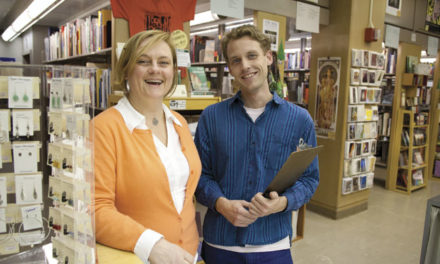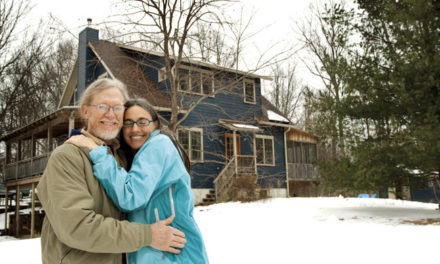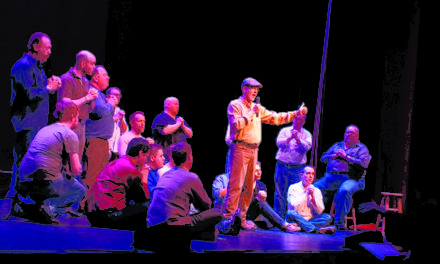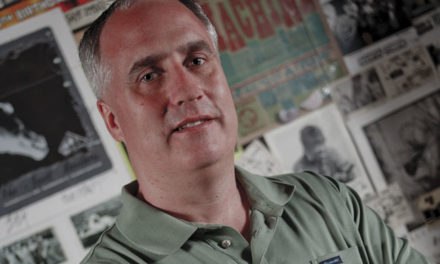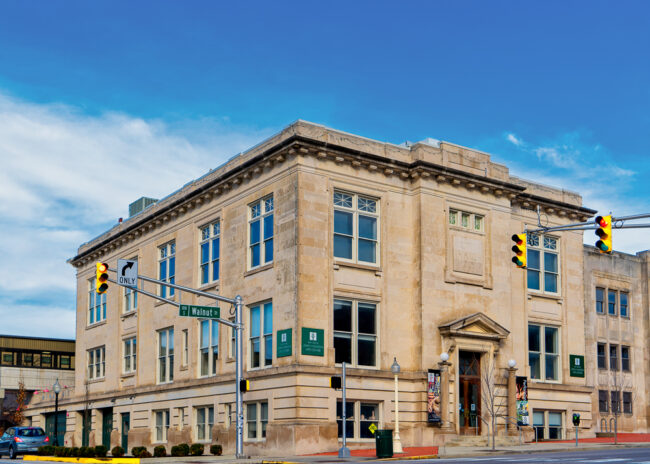
The main entrance of the Ivy Tech John Waldron Art Center. Photo by Martin Boling
by CRAIG COLEY
Ten years ago, Ivy Tech Community College–Bloomington acquired the John Waldron Arts Center, a building with a long history of public use that was in danger of being shuttered. The move expanded Ivy Tech programming for its students and the community while creating a downtown presence for the college, which is based on the city’s west side.
“For Ivy Tech, it’s opened up whole new worlds,” says Paul Daily, artistic director since the center’s opening. “People who would have never stepped into an Ivy Tech building now regularly step into this building and see some of the things we do.”
Through the Ivy Tech Center for Lifelong Learning, about 2,000 people attend non- credit classes at the Waldron each year. Some 300 children attend art classes and summer camps through Ivy Arts for Kids. Five galleries display the works of several hundred artists. Community radio station WFHB broadcasts from the building. The Waldron is home to Ivy Tech’s associate of fine arts program, and its two performance spaces are used by groups including Cardinal Stage, Stages Bloomington, Windfall Dancers, and the Jewish Theatre of Bloomington.
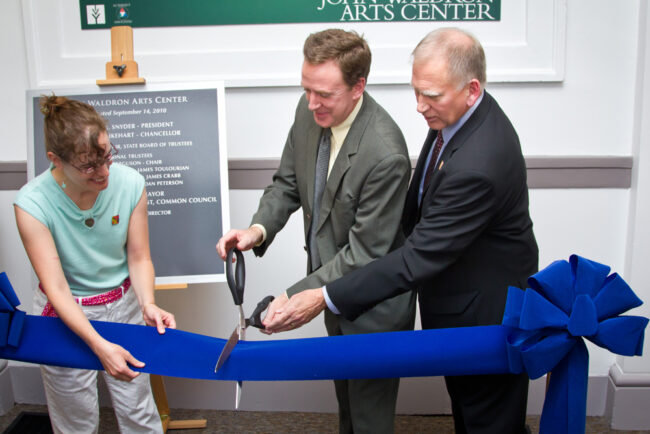
“The Waldron Arts Center is crucial to the existence of Cardinal Stage,” says Cardinal Stage Artistic Director Kate Galvin. “There’s no other performing arts venue like it in town.”
Built in 1915, the three-story building at the corner of West Fourth and South Walnut streets was Bloomington’s city hall for 50 years. It housed the police department from 1965 to 1985, then was mostly vacant until 1990, when the Bloomington Area Arts Council raised money to renovate it.
The arts council built an auditorium on the third floor and a smaller theater on the first floor, converted other rooms into galleries and studios, and renamed the building for a relative of major donor Cecile Waldron. But the arts council struggled to keep up with expenses, and in 2010 announced it would need to close the Waldron if it did not raise $120,000.
John Whikehart, Ivy Tech-Bloomington chancellor at the time, saw an opportunity to preserve the building’s use as an arts space while expanding Ivy Tech’s offerings. “It was a great fit both ways— for our academic purposes and for our connection to the community,” Whikehart says. He told then-Mayor Mark Kruzan that if the arts council could not raise the money, Ivy Tech would buy the Waldron and run it with a commitment to maintain 70% of its use as community arts space. In May 2010, the City bought the building from the arts council and sold it to Ivy Tech.
There was much to do, beginning with sorting through the materials left behind, which included art and office supplies and props and set materials from 20 years of performances. To transform the Waldron, Whikehart hired Daily, a native of Kokomo, Indiana, and a graduate of Indiana University. Daily had started a theater company in New York City and had experience managing facilities.
“This community definitely believed in the Waldron, and everybody wanted it to succeed,” Daily says. Ivy Tech refinished the wood floors, redid the lighting systems in the galleries and theaters, replaced the seats in the auditorium, turned the gift shop into a gallery, and repainted everything.
Whikehart, who was chancellor from 2001 to 2014, considers acquiring and reinvigorating the Waldron his proudest accomplishment. Like most community colleges, Whikehart says, Ivy Tech is a commuter campus. Having a home in the heart of Bloomington’s entertainment and arts district allows the college to fulfill its mission of serving the general public as well as embed its fine arts program in the community.
For more information, visit ivytech.edu/bloomington/waldron.
Check out photos taken at the Waldron over last ten years in the photo gallery below.
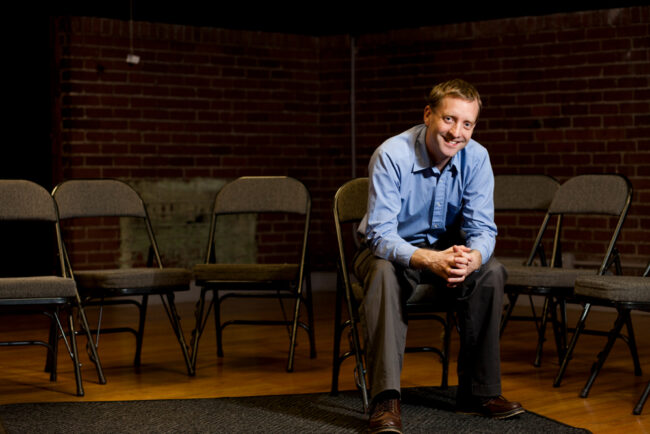
Photo by Shannon Zahnle 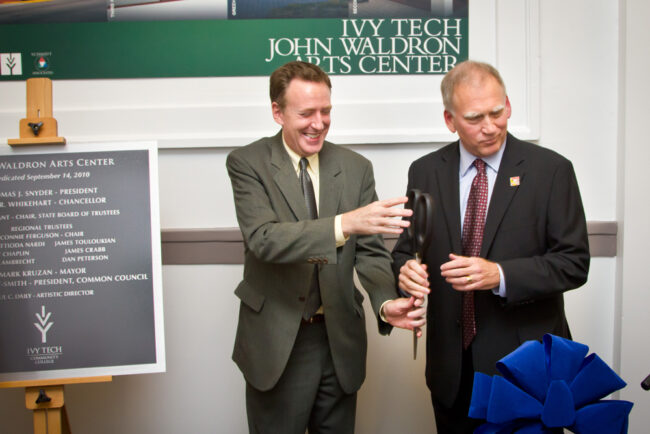
Courtesy photo 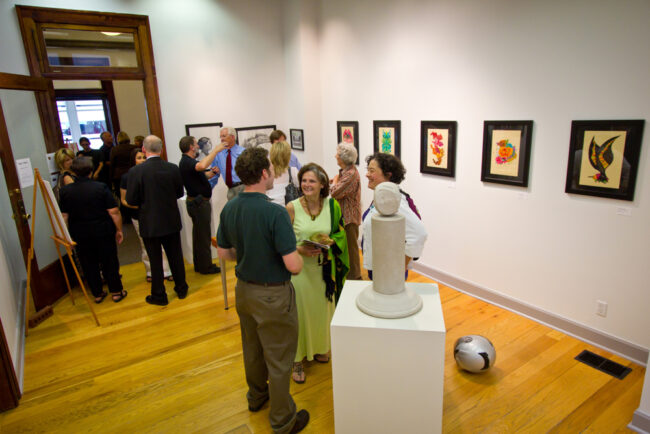
Courtesy photo 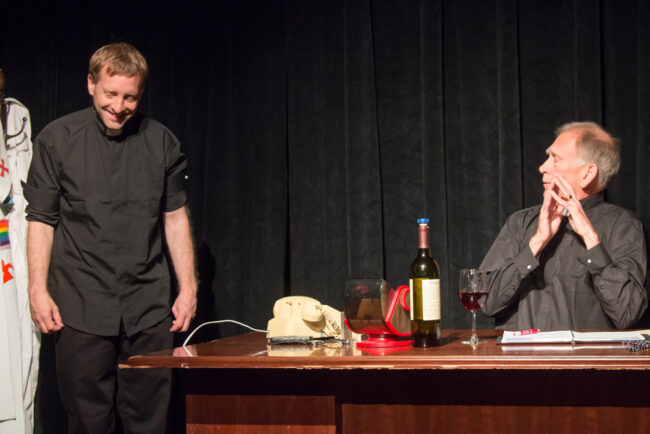
Courtesy photo 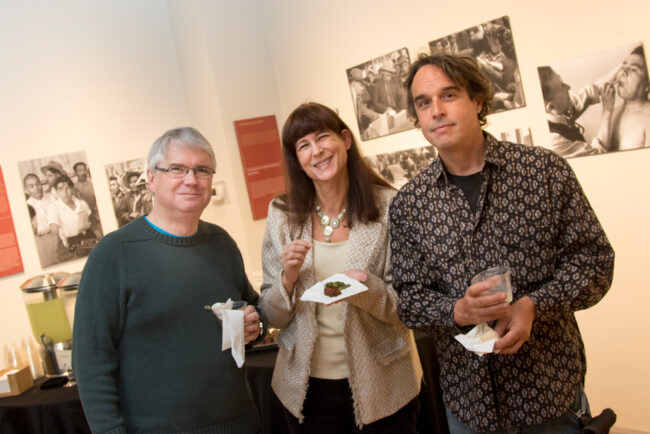
Courtesy photo 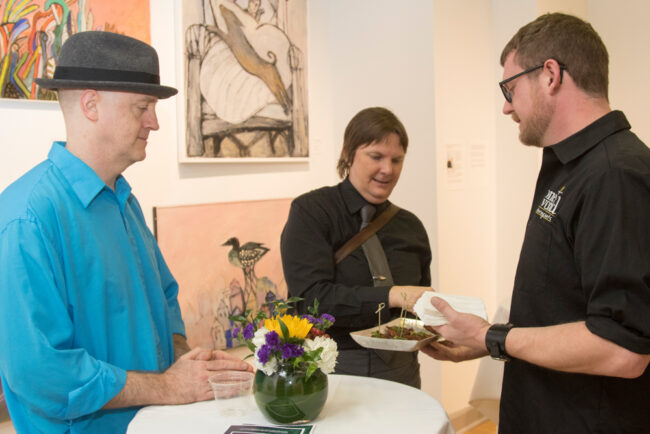
Courtesy photo 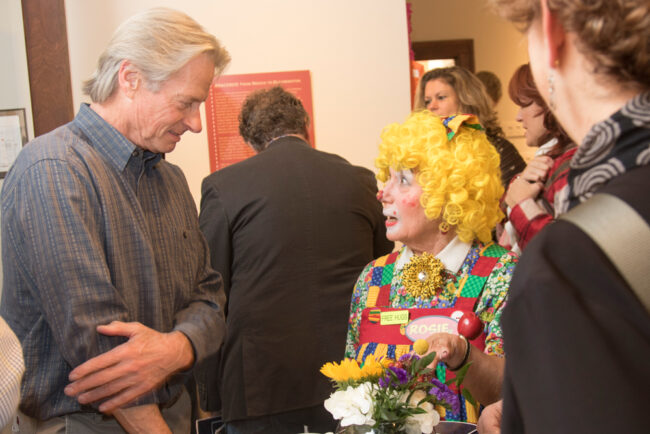
Courtesy photo 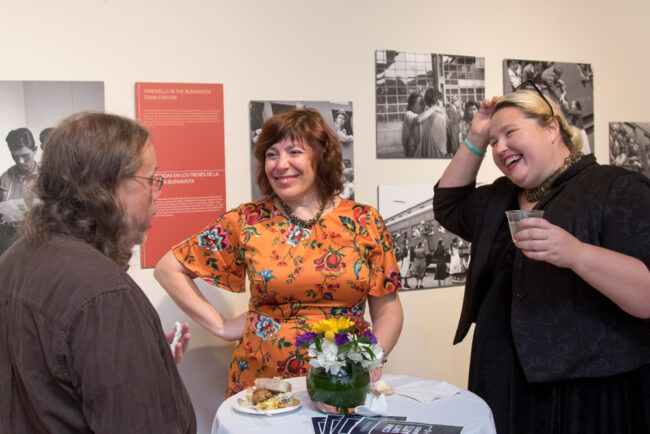
Courtesy photo 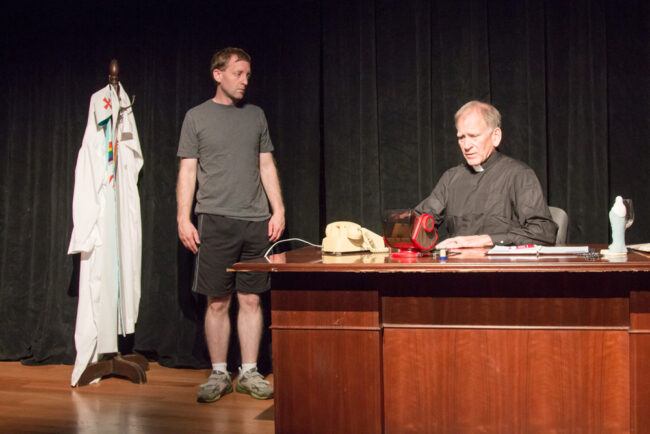
Courtesy photo 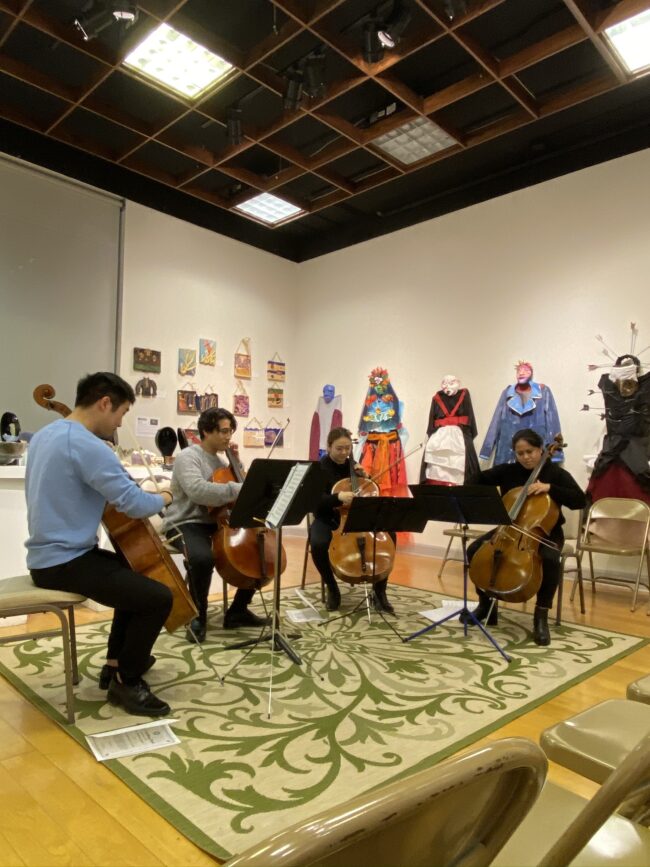
Courtesy photo 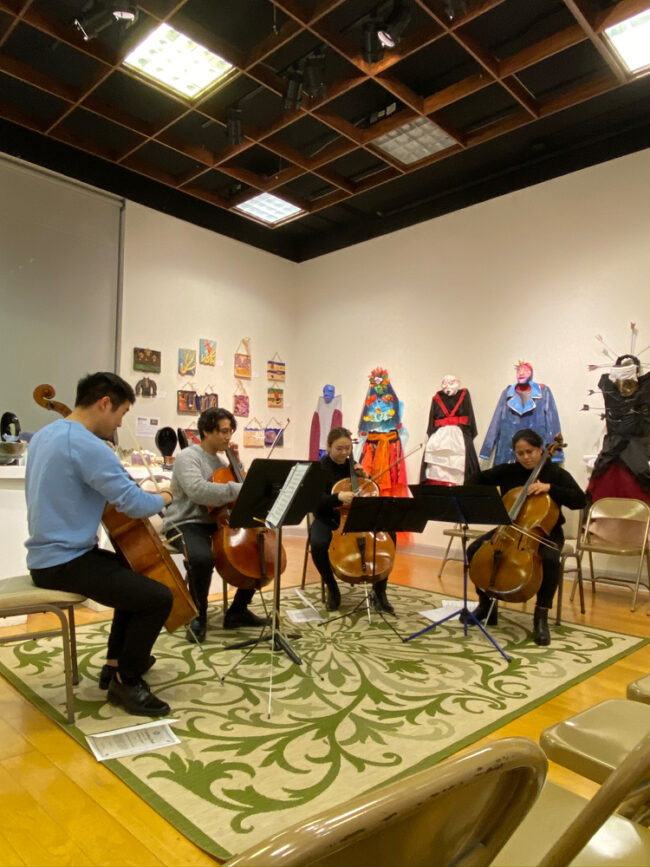
Courtesy photo 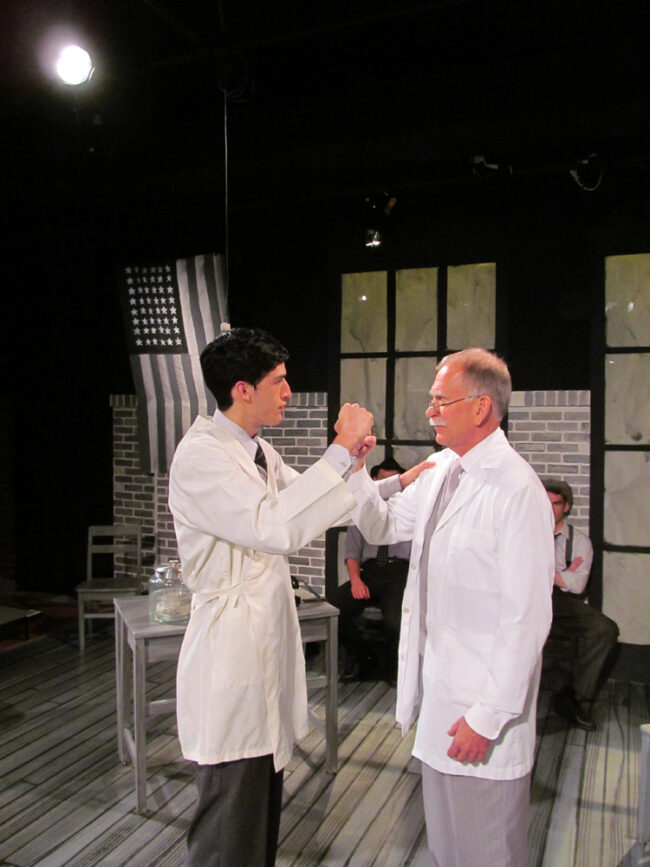
Courtesy photo 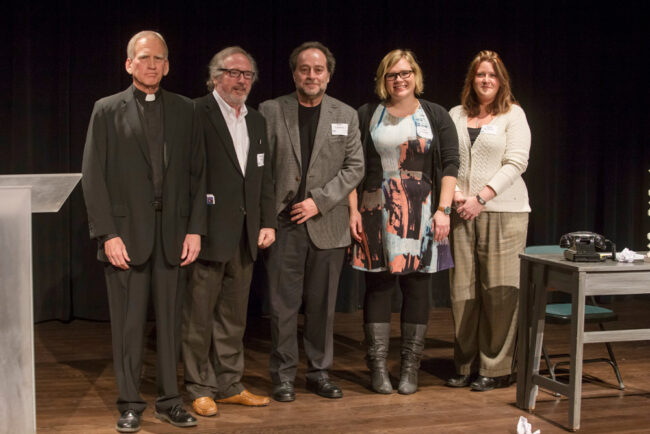
Courtesy photo 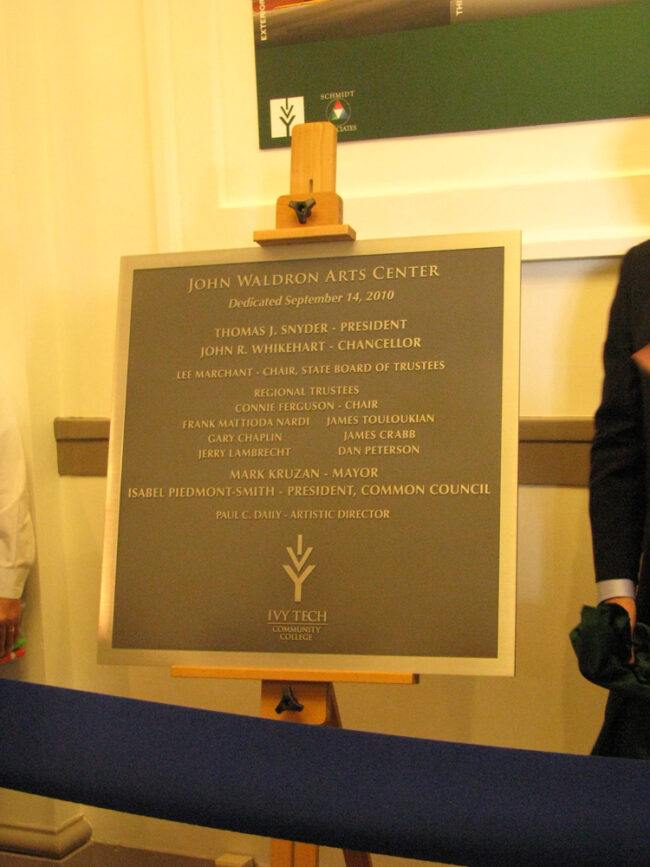
Courtesy photo 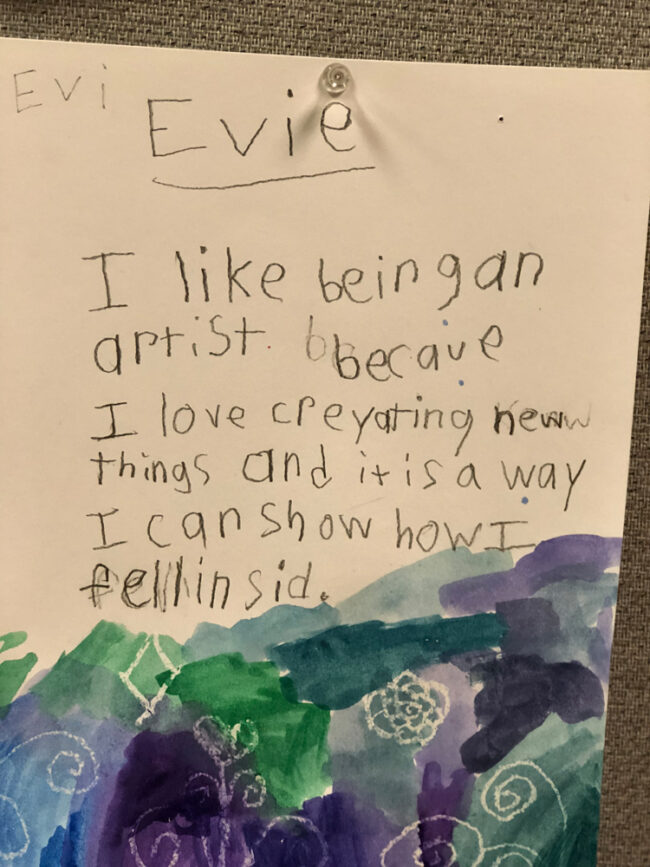
Courtesy photo 
Paul Daily. Courtesy photo 
Paul Daily. Courtesy photo 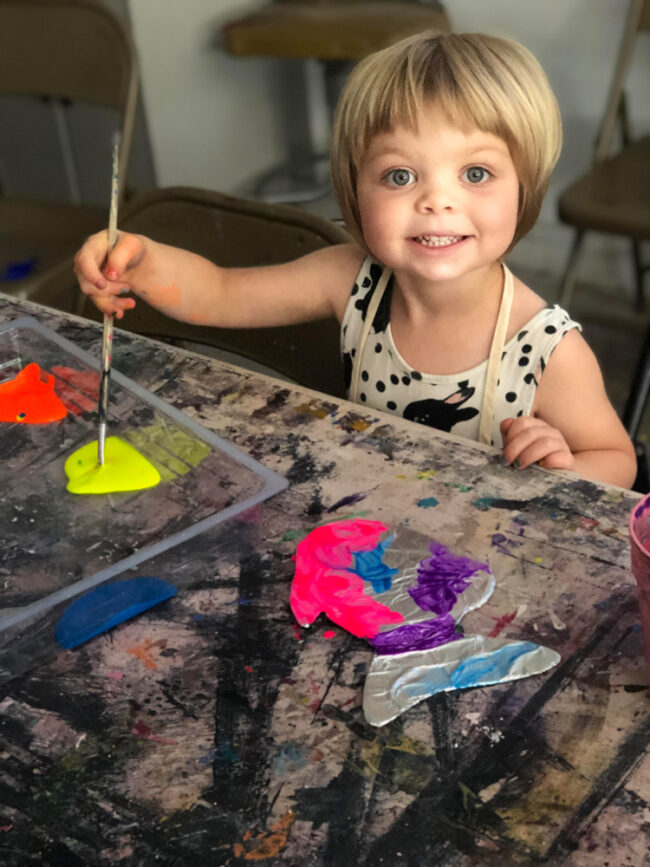
Courtesy photo 
Courtesy photo 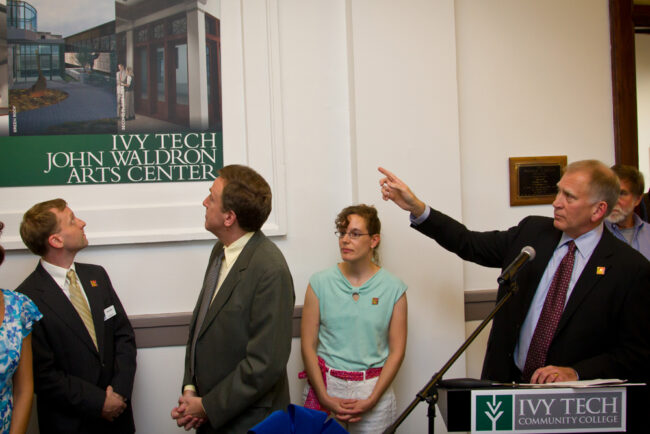
Courtesy photo 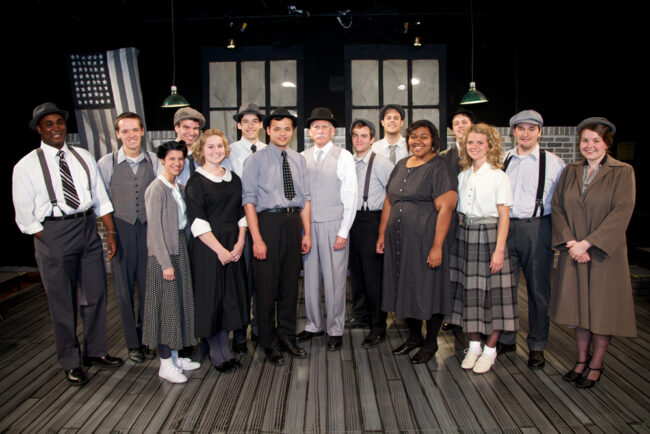
Courtesy photo 
Paul Daily. Courtesy photo 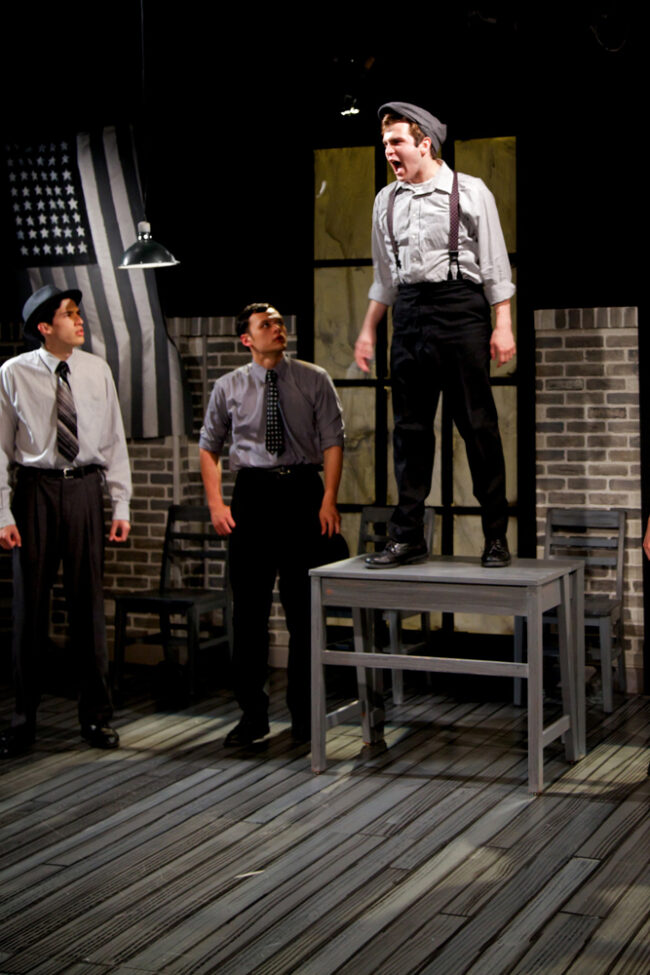
Courtesy photo 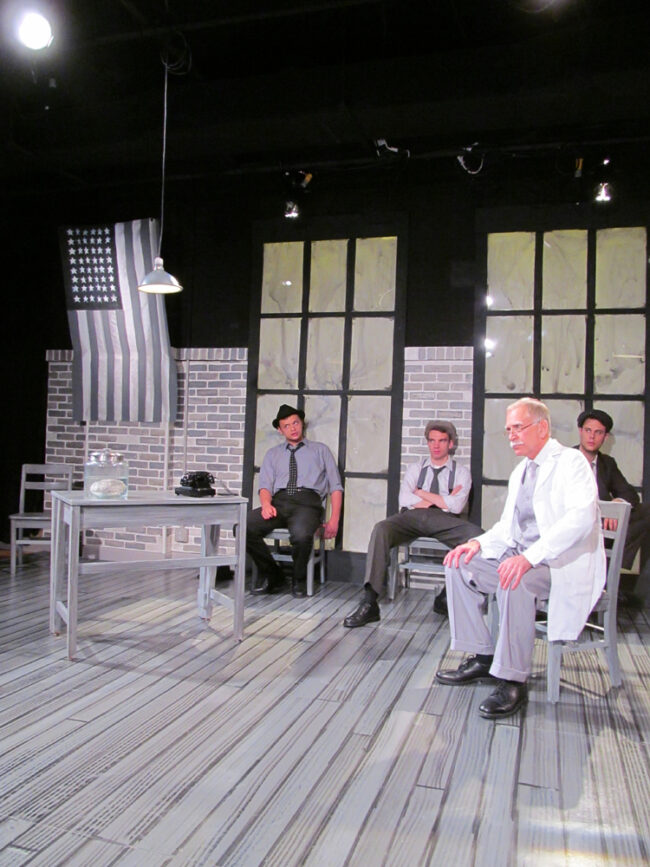
Courtesy photo


